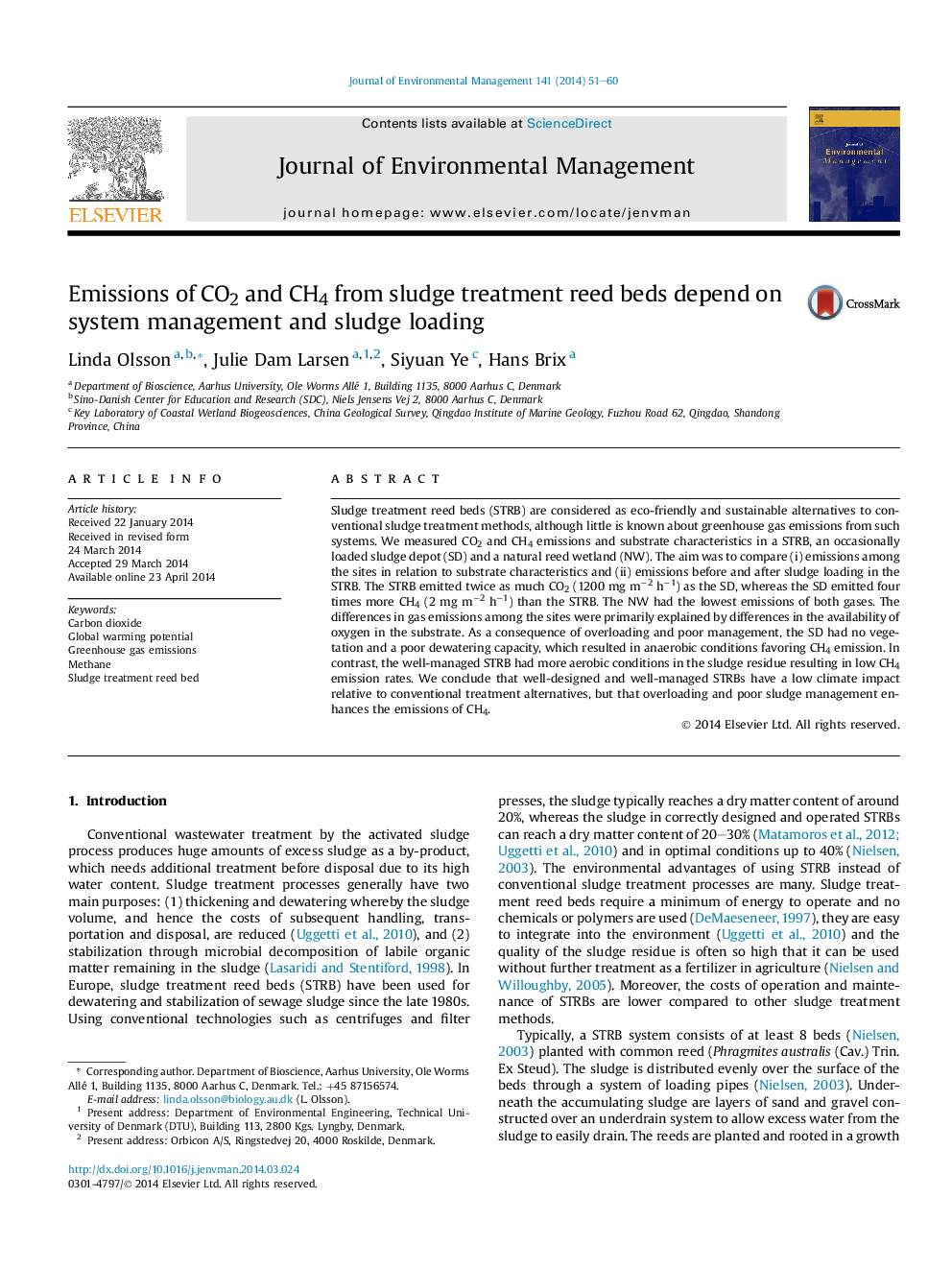| Article ID | Journal | Published Year | Pages | File Type |
|---|---|---|---|---|
| 1055908 | Journal of Environmental Management | 2014 | 10 Pages |
•Emissions of CO2 and CH4 from sludge treatment reed beds were assessed.•CH4 emissions were low in a sludge treatment reed bed but high in a sludge depot.•The presence of reeds decreases emission of CH4 from sludge treatment reed beds.•Sludge overloading results in anaerobic conditions and high CH4 emission rates.•The climatic impact of sludge treatment reed beds is low compared to alternatives.
Sludge treatment reed beds (STRB) are considered as eco-friendly and sustainable alternatives to conventional sludge treatment methods, although little is known about greenhouse gas emissions from such systems. We measured CO2 and CH4 emissions and substrate characteristics in a STRB, an occasionally loaded sludge depot (SD) and a natural reed wetland (NW). The aim was to compare (i) emissions among the sites in relation to substrate characteristics and (ii) emissions before and after sludge loading in the STRB. The STRB emitted twice as much CO2 (1200 mg m−2 h−1) as the SD, whereas the SD emitted four times more CH4 (2 mg m−2 h−1) than the STRB. The NW had the lowest emissions of both gases. The differences in gas emissions among the sites were primarily explained by differences in the availability of oxygen in the substrate. As a consequence of overloading and poor management, the SD had no vegetation and a poor dewatering capacity, which resulted in anaerobic conditions favoring CH4 emission. In contrast, the well-managed STRB had more aerobic conditions in the sludge residue resulting in low CH4 emission rates. We conclude that well-designed and well-managed STRBs have a low climate impact relative to conventional treatment alternatives, but that overloading and poor sludge management enhances the emissions of CH4.
